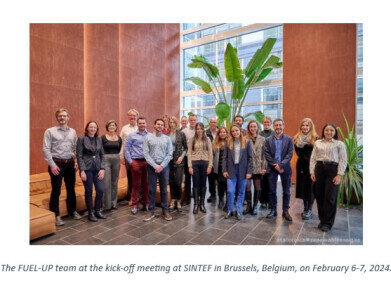Biofuel Industry News
How Can Fracking Earthquakes Be Reduced?
Jun 02 2020
Earthquakes are one of the most common risks associated with fracking. Now, a team of researchers from Stanford University’s School of Earth, Energy & Environmental Sciences has developed a new approach that could warn regulators in advance and minimise the risk of damage from fracking tremors.
The concept is underpinned by the idea that local communities will feel small tremors and shakes well before earthquakes grow large enough to cause damage. These types of smaller tremors are known as nuisance-level shakes and are being used to predict what could be coming next. The paper was published in the Bulletin of the Seismological Society, with co-author and Stanford University geophysics professor William Ellsworth explaining that while the goal of fracking is to trigger small earthquakes that force open fractures to extract oil, “sometimes they are larger than planned.”
Rethinking traffic light protocol
Currently, a colour-based system known as ‘traffic light protocol’ is used to determine whether fracking can continue. If earthquakes remain small and relatively insignificant, operations can continue. While traffic light protocol is widely used in countries such as the United States and Canada, it can often fail to warn regulators of bigger, more dangerous earthquakes that could materialise.
Building on the existing traffic light protocol strategy, Ellsworth and his team developed mathematical formulas that predict the probability of an earthquake escalating to more than nuisance level. They factored in local variables such as geology, infrastructure and distance from local communities.
“If you tell me what exposure you have in a certain area—population density, site amplification, distance to towns or critical infrastructure —our analysis can spit out numbers for green-, yellow- and red-light thresholds that are fairly well informed by real-world risks,” says Ryan Schultz, lead author of the study and a PhD student in geophysics at Stanford University.
Empowering local communities
Schultz adds the new protocols can be used to predict the maximum magnitude and earthquakes can reach before exceeding nuisance level. “This is about making it clearer what choices are being made and facilitating a conversation between operators, regulators and the public,” says Schultz. “If you stop the operation right at or before the threshold for damage, you’re assuming you have perfect control, and often that’s not the reality,” he adds. “Often, the biggest earthquakes happen after you’ve turned off the pumps.”
Jack Baker, co-author of the study says the new protocols allow frackers to tailor their risk factors depending on unique variables. “Areas such as Oklahoma, with buildings that were not designed to resist strong shaking, or areas that anticipate amplified shaking due to soft soils, can account for their community needs with this approach,” says Baker, a professor of civil and environmental engineering at Stanford University.
Want to know more about the latest oil and gas news? Spotlighting petroleum products, liquid fuels and lubricants, ‘Attend ASTM International Meetings Express your Views!’ offers insight from Alyson Fick and John Gallagher on behalf of ASTM International.
Digital Edition
PIN 25.1 Feb/March
March 2024
In This Edition Safety - The technology behind the ION Science Tiger XT - Safety with ammonia and LOHCs as hydrogen carriers Analytical Instrumentation - Discussion on new tribology te...
View all digital editions
Events
Apr 22 2024 Hannover, Germany
Apr 22 2024 Marrakech, Morroco
Apr 22 2024 Muscat, Oman
Apr 22 2024 Rotterdam, Netherlands
Apr 23 2024 Singapore


















